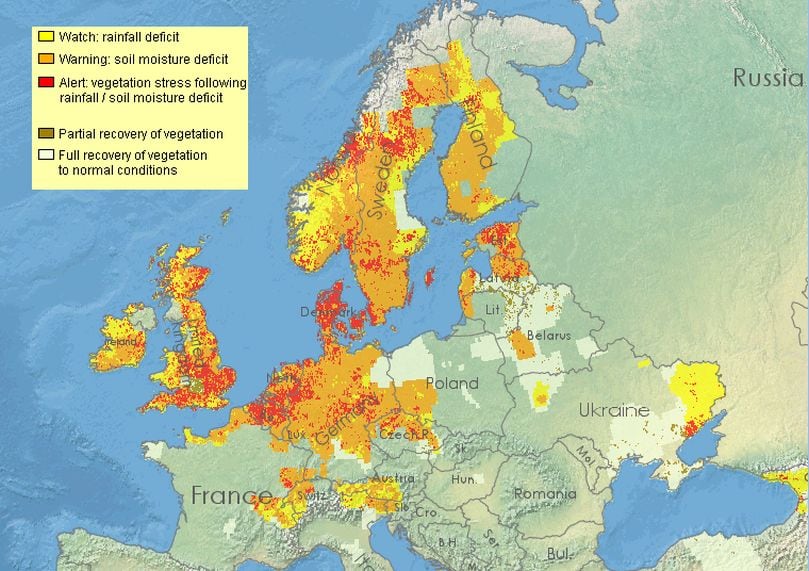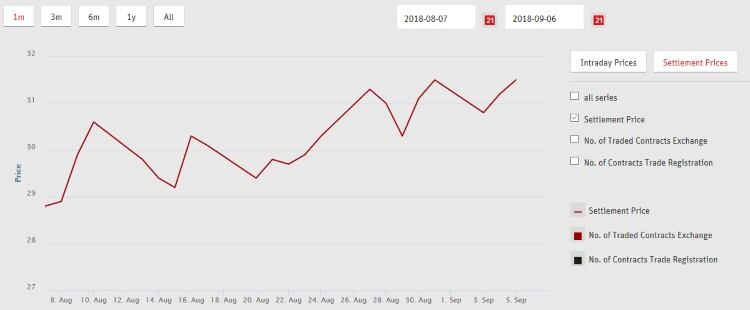Extraordinary dry and hot weather that gripped Europe and the UK in July and August is expected to have a dramatic effect on the harvest of potato varieties needed to make potato chips.
Record high temperatures were set across the continent in an unusually prolonged and broad heatwave, which producers are predicting could cause a massive 30% crop failure.
However, the exact extent of the situation will not be clear until the harvest is completed in late autumn (fall).
The extreme weather is anticipated in bring in a harvest of much lower yields and smaller sizes.
For potato chip producers, this means a higher commodity price, smaller chips – meaning more potatoes will be required to produce a single bag of potato chips – and a limited choice.
True impact

The European Snacks Association (ESA) has been tracking the issue throughout the summer.
“Whilst 2018 witnessed extreme weather conditions across Europe, the true impact on quality and yield will only be known once the full crop has been lifted,” Andrew Curtis, scientific and regulatory affairs manager of ESA and director general of the Potato Processors’ Association (PPA) told BakeryandSnacks.
“Impacts will, of course, vary from country to country and will be dependent on several factors including the varieties grown, whether fields were irrigated or unirrigated, the impact of the cold and wet weather earlier in the year, the acreage that was planted, whether the tubers were part of the early or main crop, and the intended finished product.
“The various national statements [from associations like PPA, BDSI and many others] paint a clear picture that volumes in 2018 are expected to be significantly lower than average, and it is extremely likely that there will be serious issues in terms of quality and availability of potato varieties that are suitable for processing, and also for long-term storage – meaning that this is probably not a short-term issue,” he said.
Commenting on how it could affect potato chip producers, Curtis noted that most European processed potatoes are grown on a contract basis, meaning prices are agreed with the farmers in advance of the season. In circumstances where contractors are not able to meet a specific manufacturer’s quality criterion, there may a degree of flexibility that can be applied depending on the end product (for example, size of tubers, specified varieties), but that would also be dependent on the manufacturer and the relationship they have with their growers.
“There will still be a percentage of raw material that is purchased on the spot market and this is where prices are likely to be higher,” he said.
Japan's potato chip disruption
Last year, the disruption to the production of potato chips in Japan following a potato shortage caused by four typhoons sparked a buying frenzy among consumers who scrabbled to stockpile their favorite snack.
“Also, in markets where contractors are unable to meet their contracted volumes, we are likely to see significantly increased prices for raw materials as manufacturers compete for alternative supplies.
He emphasized it is unclear what impact this will have on prices for consumers.
“That is really an issue for individual manufacturers and retailers and not something we would speculate on,” he told us.
According to Belgian company Agristo’s CEO Filip Wallays, potato prices have already increased tenfold across Europe compared to a few months ago.

“Sharp rises in commodity prices could lead to price increases that could be passed on to the consumer, but this is decided by competition alone,” added Carsten Bernoth, spokesman for The Federal Association of the German Confectionery Industry (BDSI).
The association has joined in the appeals for fairness to all parties involved, according to federal minister Julia Klöckner at the press conference on the federal-state aid program for farmers.
The UK government, too, has committed to allow flexibility for farmers in the application of the rule on water abstraction.
The arrangement will allow farmers to trade water allowances – as set out in their abstraction licence – on a short-term basis, without the need to change their licence.
Highlights of Europe’s potato chip market
- Europe’s potato chips segment is forecast to bring in €6,73bn ($7,79bn) in revenue in 2018 and will grow annually at a 2.0% CAGR between 2018 and 2021.
- In comparison, the US – the biggest consumer of potato chips – is projected to generate €14,75bn ($17,09bn) in 2018.
- In relation to total population figures, revenue of $13.97 per person is expected in 2018.
- The average per capita consumption currently stands at 1.5kg, generating €12.65 ($14.64) in revenue per person.
- The average price per unit is currently €8.18 ($9.47).
Info sourced from Statista.


